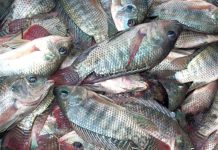If there’s an agricultural crop that Filipino farmers and entrepreneurs ought to persist in planting, it’s coconut. While the Philippines ranks second to Indonesia in global coconut production, it continues to be a cornerstone of agricultural exports.
“The coconut industry is ready for takeoff, considering the various products it offers to the world, apart from traditional exports,” Marco Reyes told Marid Agribusiness Magazine recently. “Revenues have remained at the US$2-billion level, averaging US$2.551 billion per year.”
Reyes, the vice chairman of the United Coconut Associations of the Philippines, Inc. (UCAP), acknowledged that while the coconut industry may not be experiencing rapid growth, it continues to play a significant role in the country’s economy.
He emphasized that the coconut industry has maintained a strong foundation in its economic contributions, attributing this stability to its resilience. He further noted that coconut exports persisted even throughout the recent pandemic.
According to Reyes, the Philippines has remained a leader in the global coconut industry in almost all aspects and products.
“Our major coconut product exports, such as coconut oil, desiccated coconut, copra meal, oleochemicals, coco shell charcoal, and activated carbon, have maintained a constant presence in the market,” he said.
These major exports are “supported by rising non-traditional exports like virgin coconut oil (VCO) and coconut water.” Innovations in both products and marketing strategies, he said, have also contributed.
Among the major exporting countries, the Philippines tops as it contributes 46% of the total share. Indonesia trails with 31%, then Malaysia (9%), and Papua New Guinea (2%). The remaining 12% share comes from other countries.
Bernie Cruz, the administrator of the Philippine Coconut Authority (PCA), stated that the Philippines holds the position of the leading exporter of coconuts globally, only because other major coconut-producing countries use their own coconut resources.
“We are number one because our top rivals are consuming their own coconuts,” Cruz told Marid. “However, we must realize that due to the high cost of our coconut exports in comparison to those of other nations, we are still not globally competitive.
“This is one of the reasons we can only produce so much despite the enormous demand, in addition to other production efficiency factors,” Cruz added.
The PCA said that most of the coconut oil (crude) produced in the Philippines are exported to the Netherlands, United States, Malaysia, Italy, and Spain. Copra meal/cake as exported to China, South Korea, Vietnam, and India.
The destination of desiccated coconut are the Netherlands, United States, Australia, Canada, and United Kingdom. Activated carbon goes to Japan, Germany, United States, China, and South Korea.
One coconut product that most farmers don’t know is oleochemicals, the downstream products of coconut oil, mainly used in detergents and surfactants. These are exported to the Netherlands, United States, Japan, South Korea, and China.
VCO is exported to these countries: United States, Germany, United Kingdom, Canada, and the Netherlands. Coconut water is also exported to those countries except for Germany; Australia also imports coconut water from the Philippines.
Canada, the United States, Australia, United Arab of Emirates, and Japan import fresh coconut from the Philippines. Singapore, along with the United Kingdom, Japan, Australia and the United States buy coconut sugar.
Turkey, Canada, United States, United Kingdom, and Germany import coconut flour from the Philippines while Malaysia, United States, the Netherlands, United Kingdom, and Spain buy coconut milk/cream.
The coconut charcoal is exported to China, Japan, Turkey, South Korea, and Jordan. The lone market for coir fiber is China.
Aside from those countries, Reyes said the Philippines has also penetrated the Russian market, India, New Zealand, the Middle East, Africa, and even other neighboring Asian countries, particularly members of the Association of Southeast Asian Nations.
From the air, the Philippines looks like a country filled with coconut trees. After all, coconut is planted in 69 out of 82 provinces. It is estimated that between 25% and 33% of the population is partly dependent on coconuts for their livelihood.
About 347 million coconut trees are planted throughout the country. Most of the coconut plantations can be found in the following provinces: Quezon, Zamboanga del Norte, Davao Oriental, Zamboanga del Sur, Camarines Sur, Maguindanao, Misamis Oriental, Palwan, Misamis Occidental, and Sorsogon.
The top coconut producing provinces are Quezon, Zamboanga del Norte, Maguindanao, Davao Oriental, Sarangani, Lanao del Norte, Misamis Oriental, Misamis Occidental, Zamboanga del Sur, and Palawan.
Currently, the Department of Agriculture (DA) is implementing substantial initiatives aimed at advancing the coconut sector. Key programs include the planting and replanting of coconut trees, fertilization efforts, and the empowerment of farmers through cooperatives and associations, all of which are crucial to this endeavor.
The agriculture department also underscores the significance of adopting good agricultural practices and is working to strengthen the position of farmers within the supply chain. Moreover, measures to mitigate climate change are being incorporated into coconut farming practices to promote sustainability and ensure long-term viability.
Coconut has elevated the standard of living of some farmers. Take the case of Benjamin R. Lao, the man behind the Lao Integrated Farms, Inc. in barangay Eman in Bansalan, Davao del Sur.
In 1998, Lao started to develop the 5-hectare coconut farm he inherited from his parents. Every three months, he harvested only 400-600 nuts. Since commercial fertilizer was very expensive, he planted different nitrogen fixing species. The leaves from the nitrogen fixing species that fell below the ground become instant organic fertilizer for the coconut trees.
Several months later, the coconut yield markedly increased to 15,000 nuts per quarter. “Some of my neighbors told me it was a miracle,” he said.
After attending a seminar conducted by the PCA in Davao City, he thought of producing coconut sugar from the coconut sap or toddy (locally known as tuba) as it contains 12%-18% sugar in its natural form. Each tree in a good stand can yield an average of two liters of sap daily. At least four coconut trees are needed to produce one kilo of sugar per day.
Coconut sugar is easy to sell as it is healthy. In fact, it is good for those with diabetes. Compared with refined cane sugar, coconut sugar has a glycemic index (GI) at 35. This is much lower than the 54 GI, the level which nutritionists consider safe for people who have to watch out for their glucose level.
“Coconut sugar is not only sweet but even more nutritious than cane sugar,” said Lao, who was named by the agriculture department as an outstanding farmer in the field of coconut farming in 2007 and an outstanding organic farmer in 2011.
Speaking of climate change, researchers believe that by planting more coconuts, the country could help stave off the effects of climate change. “These coconut lands could be developed for income generating carbon sequestration projects and carbon credit market,” pointed out Dr. Severino S. Magat, former PCA extension department manager.
Carbon sequestration refers to the long-term storage of carbon dioxide or other carbon compounds to help mitigate or postpone global warming and prevent severe climate change. Carbon dioxide, in its gaseous form, can be removed from the atmosphere through the process of photosynthesis. During this process, plants convert carbon dioxide into sugars, or it may be released back into the atmosphere through transpiration.
In his paper titled, “Productive and Sustainable Coconut Farming Ecosystems as Potential Carbon Sinks in Climate Change Minimization: A Review and Advisory Notes,” Dr. Magat highlighted the significant role that coconut plantations play in countering the adverse effects of climate change.
In coconut cultivation, as in most tree crops, carbon is sequestered in both the biomass and the soil of the ecosystem, highlighting that these components serve as primary carbon sinks for atmospheric carbon dioxide. Dr. Magat suggests that effective management and regulation of these carbon sinks can be achieved through the implementation of appropriate agricultural practices.
A two-year research project carried out by PCA revealed that the annual carbon sequestration rate for the local tall variety of coconut is 4.78 tons of carbon per hectare, which corresponds to 17.54 tons of carbon dioxide per hectare, according to Dr. Magat.






